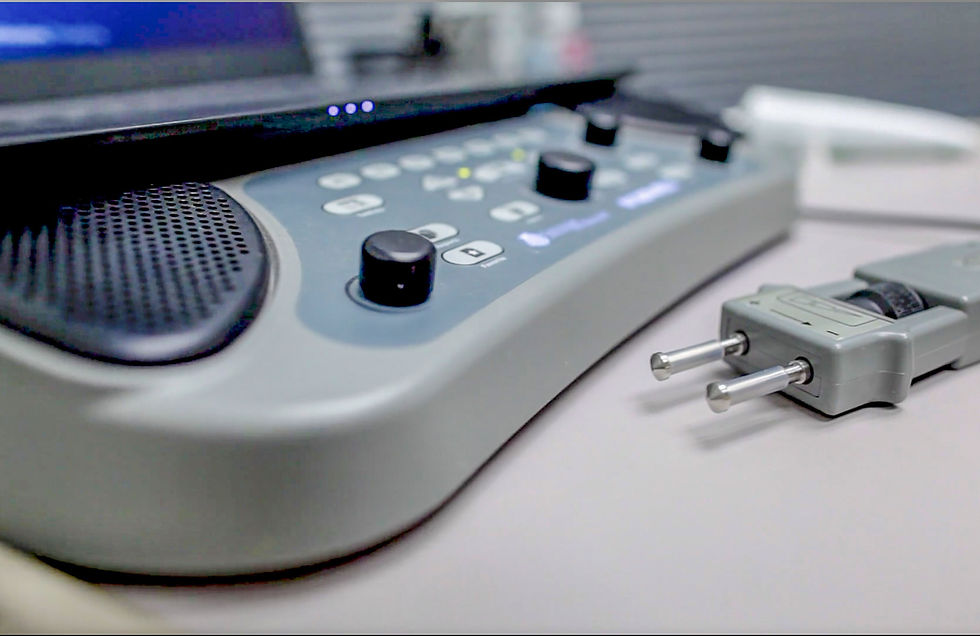Restoring Brain-Body Balance Through Reflex Reset and Sensory Stimulation
- Plasticity Brain Centers
- Aug 19
- 3 min read
Updated: Sep 15
Every movement we make, from taking a step to writing our name, relies on seamless communication between the brain and body. But when this communication is disrupted—whether by developmental delays, injury, or neurological challenges—the effects can ripple into daily life.

At Plasticity Brain Centers, two of the most effective tools we use to restore this connection are reflex retraining and sensory stimulation. These approaches may sound technical, but at their core, they help the brain reconnect with its natural ability to move, adapt, and heal.
What Are Primitive Reflexes and Why Do They Matter?

Primitive reflexes are the automatic movements newborns rely on for survival, such as sucking, grasping, or startling. As the brain matures, these reflexes are supposed to “switch off,” paving the way for purposeful movement and learning.
But in some people, these reflexes remain active long after infancy. This can happen for many reasons—developmental differences, brain injury, or even prolonged stress on the nervous system. When reflexes stay “stuck,” they can interfere with balance, coordination, reading, focus, and posture. A child might struggle to sit still in school, while an adult may notice clumsiness or fatigue that feels out of proportion to their efforts.
Our team works to gently retrain the nervous system so these outdated reflexes no longer get in the way. This process, known as reflex integration therapy, allows the body to replace primitive movements with smoother, intentional control.
How Resetting Reflexes Impacts Daily Life
When reflexes integrate properly, the nervous system has more “space” for advanced skills. Parents often notice that children become calmer, more coordinated, and more confident in learning tasks. Adults may report improved balance, steadier walking, or greater ability to concentrate without mental fatigue.

The benefits go beyond physical movement. Since reflexes tie into sensory and emotional regulation, integration can also help reduce anxiety, improve sleep quality, and enhance social interactions. In short, resetting reflexes frees up brainpower for the things that matter most in everyday life.
What Is Sensory Stimulation Therapy?
While reflex integration clears away outdated patterns, sensory stimulation helps strengthen the brain’s ability to process new information. One of the approaches we use is called Repetitive Peripheral Somatosensory Stimulation (RPSS). It may sound complex, but the idea is simple: provide gentle, repeated input—through touch, vibration, or small electrical signals—to activate specific areas of the nervous system.

This type of sensory stimulation therapy targets the brain’s motor and sensory regions, “waking up” connections that may have gone quiet.
For someone recovering from concussion, stroke, or another neurological condition, this can make a dramatic difference. It helps the brain relearn how to communicate with muscles, improving coordination, strength, and body awareness.
Why Reflex Reset and Sensory Stimulation Work Better Together
Individually, reflex work and sensory stimulation are powerful. Together, they create a foundation for lasting change. Reflex integration clears interference, while sensory stimulation builds new, healthy connections.

Imagine a child learning to ride a bike. If primitive reflexes are still active, the child’s body may resist balance or coordination. By integrating reflexes, the child can approach the bike without that internal “static.” Then, with the help of sensory stimulation, the brain gets repeated signals to strengthen the balance system. The result is smoother, more confident riding—and a stronger nervous system overall.
A Personalized Approach to Healing
Every brain is unique, which is why no two therapy programs are the same. Our experts carefully evaluate which reflexes are still active, how sensory input is being processed, and where support is most needed. From there, we design a plan that may combine reflex exercises, sensory stimulation, and other brain-based therapies.
The ultimate goal is always the same: restore harmony between brain and body, so that patients can move, think, and live with greater ease.
Conclusion
Healing doesn’t always mean adding something new—it often means helping the brain rediscover what it already knows. By resetting reflexes and enhancing sensory pathways, the nervous system can reconnect with its natural ability to heal and adapt. For many patients, that means more than improved coordination; it means renewed confidence in daily life.


